Last-Minute NYC Holiday Gift Guide 🎁
We’ve created a holiday gift guide with presents for the intrepid New Yorker that should arrive just in time—

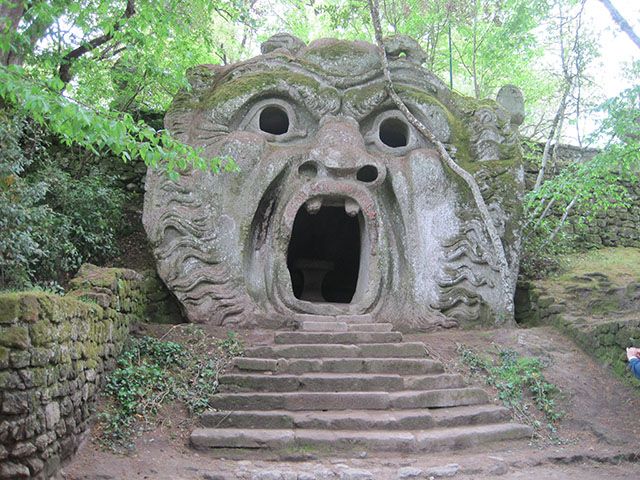
All photos by Ellen Ryan
In the northern section of the Lazio region, lies the village of Bomarzo and its wondrous Parco dei Monstri. Accessible chiefly by car, the park is 60 miles north of Rome.
Parco dei Monstri was built between 1572-74 by Pier Francesco Orsini, known as Vicino Orsini. Orsini called the park his “boschetto” or little wood. It was most likely created by Pirro Ligorio, a prominent architect and garden designer who also designed the Villa D’Este in Tivoli, near Rome. Very little is known, however, about the sculptors themselves. The figures are carved from tufo, the volcanic rock that blankets this section of Lazio. A soft stone, tufo is easy to sculpt and rough-hewn in appearance. The scale is, well, monstrous and the figures loom in mute poses of victory, agony or imperious reverie. Now mossy and softened with age, many still bear traces of their original paint. Dragons snarl, Neptune reclines and nymphs beckon in this garden of unearthly sites.
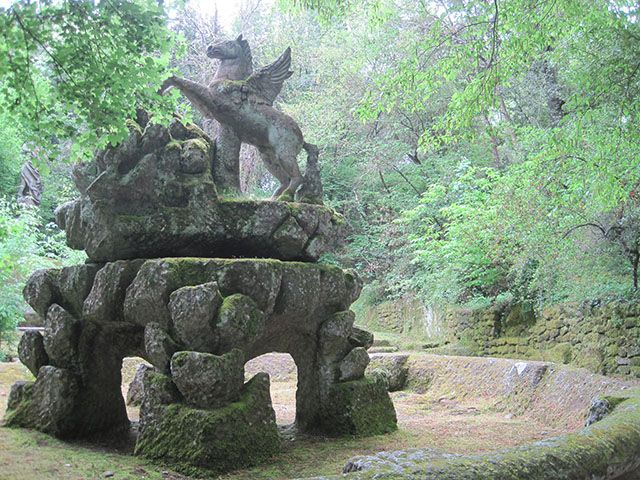
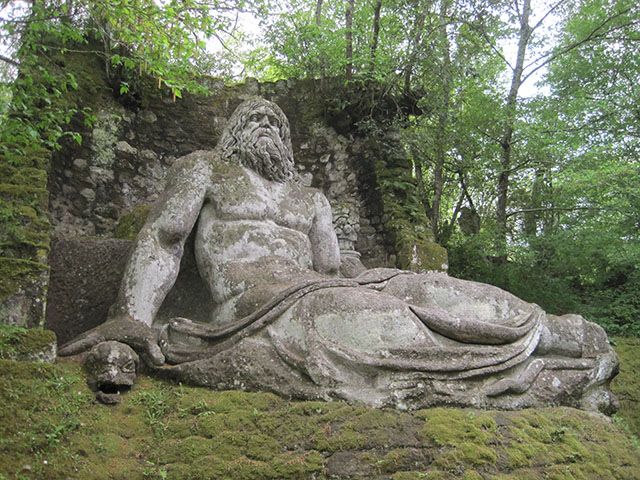
The meaning of the garden and its collection of creatures is shrouded in mystery. Over 25 figures are strewn along paths, the preferred route of which is long lost. Many reflect popular Mannerist themes – good vs. evil, man vs. nature and dark vs. light, to name a few. There are several theories of what motivated the prince to build this compound. A tribute to his deceased wife Giulia, perhaps? Or a reflection on Dante’s Inferno? No proof exists to either bolster or refute these ideas.
La Casa Pendente or leaning house (below) is the most explicit attempt to put the visitor off-balance and induce a wonderous or even frightful response. Allegorical messages are inscribed on sculptures throughout the park and are meant to guide visitors and heighten their senses as they wander among the figures. For example, Orco or Maschera Infernale, bears the inscription: “Abandon all thought, ye who enter here.”
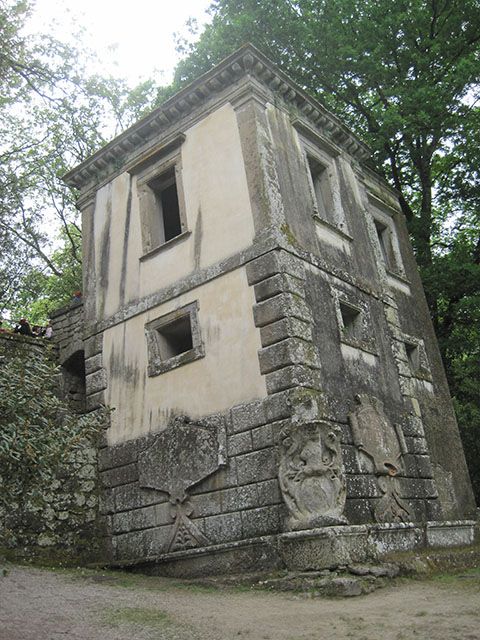
After the death of Orsini, the boschetto was forgotten for centuries. In the mid-20th century it was discovered by the Battini family, who restored its paths and cut back encroaching foliage to reveal the strange grotesques and structures of the wood. And visitors, including Salvador Dali, have made pilgrimages ever since to deduce its meaning and ponder its messages.
If the Parco feels a shade touristy when you literally enter through the gift shop (the site is privately owned), this off-putting sensation recedes as you begin to walk the paths and voices become distant and the stillness wins over.
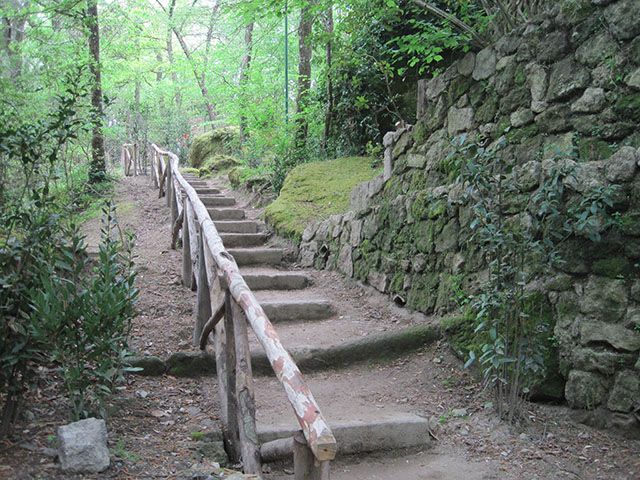
Parco Dei Mostri is open year-round, from 10am to 6pm. The entrance ticket is 10€ and parking is free. It’s a good idea to bring a picnic lunch.
Special thanks to Kimberly Bowes, the Andrew W. Mellon Professor-in-Charge of Classical Studies at the American Academy in Rome for historical context on Bomarzo.
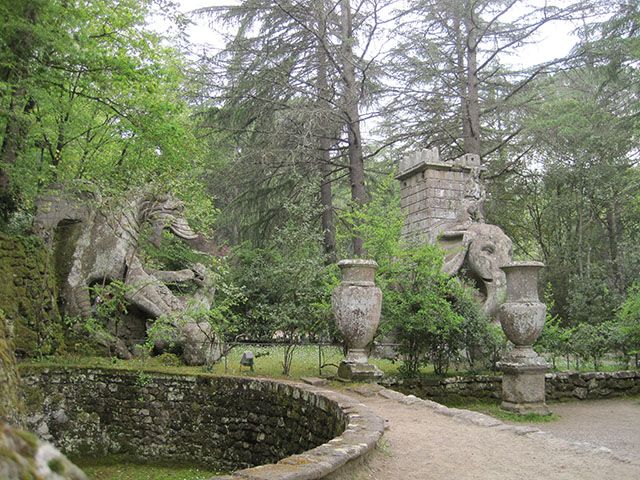
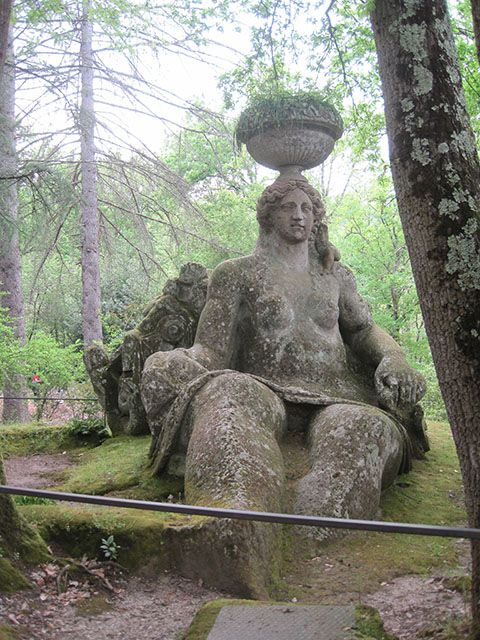
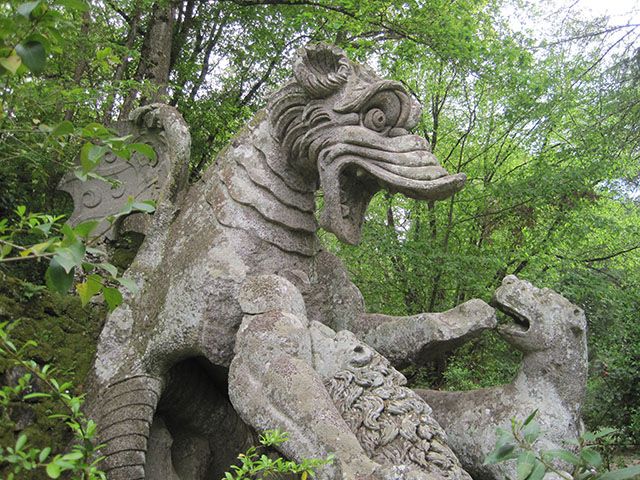
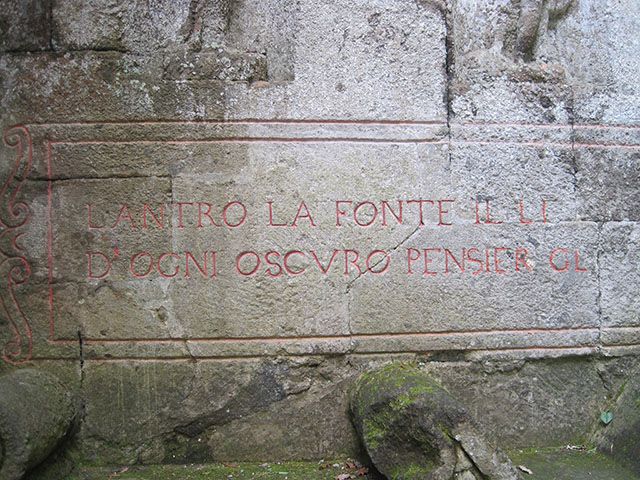
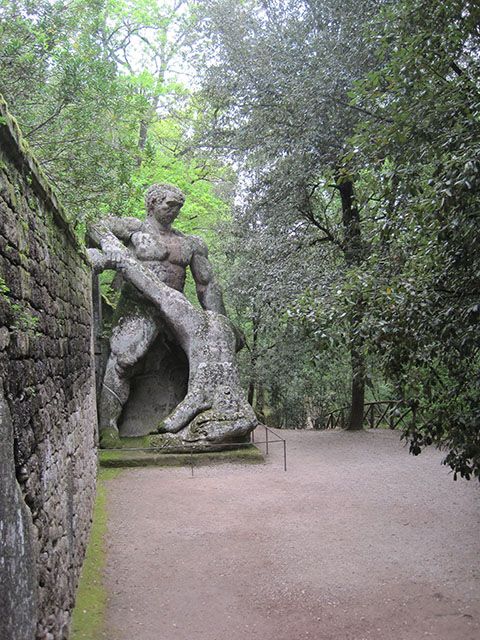
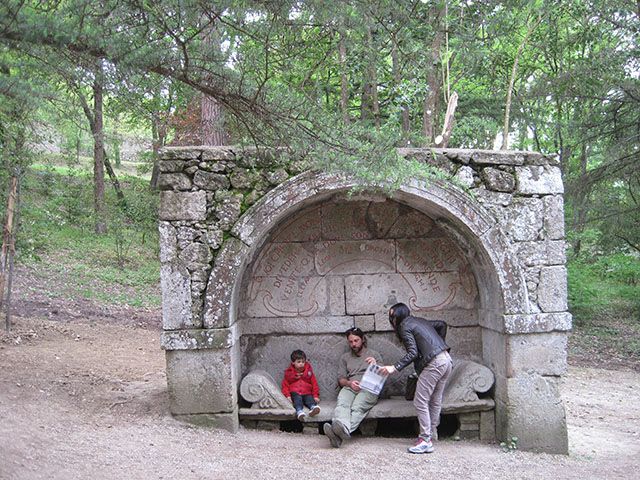
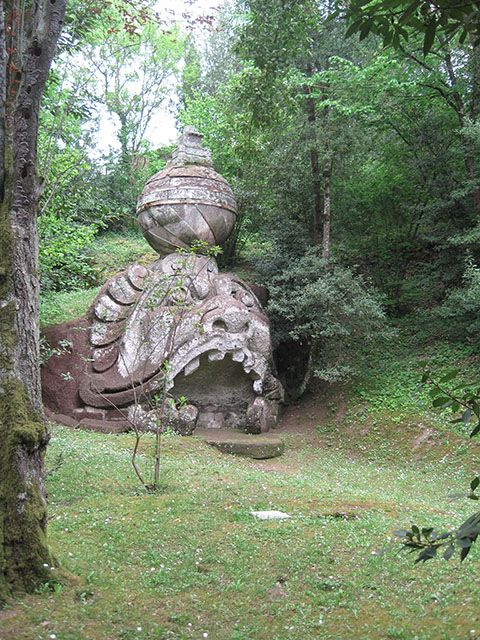
Subscribe to our newsletter